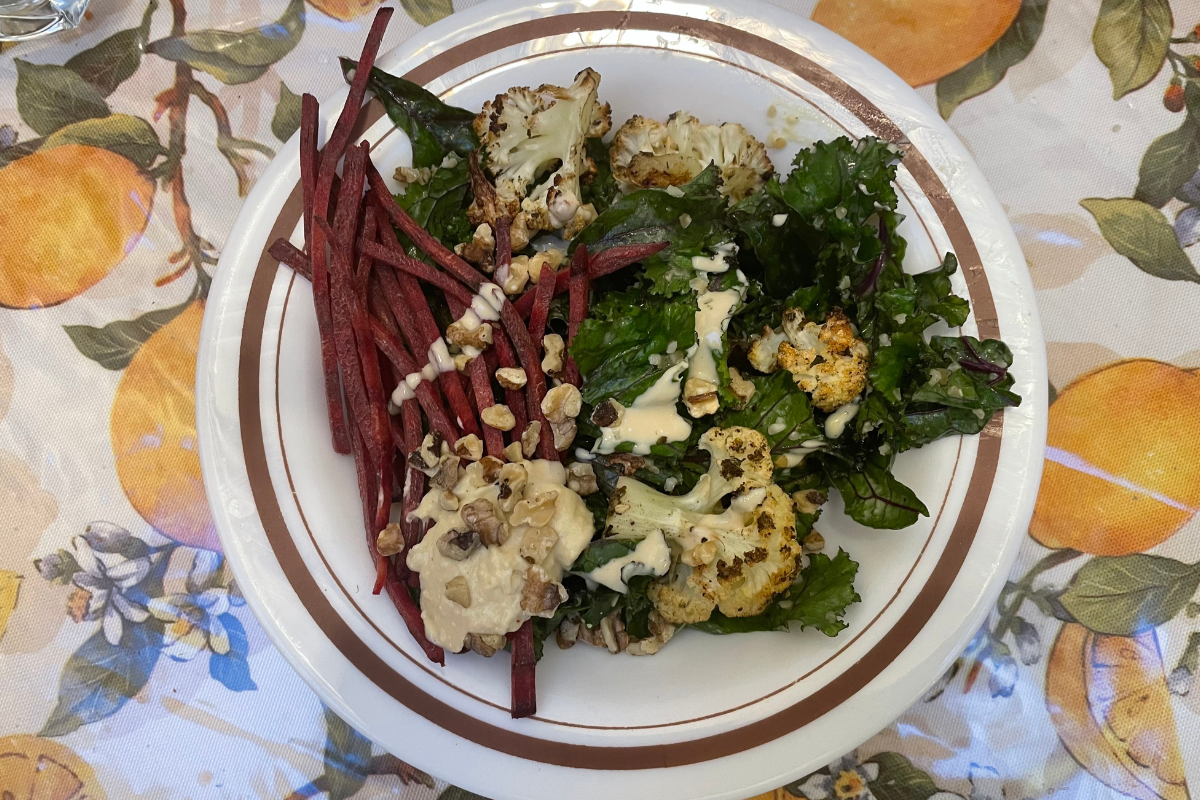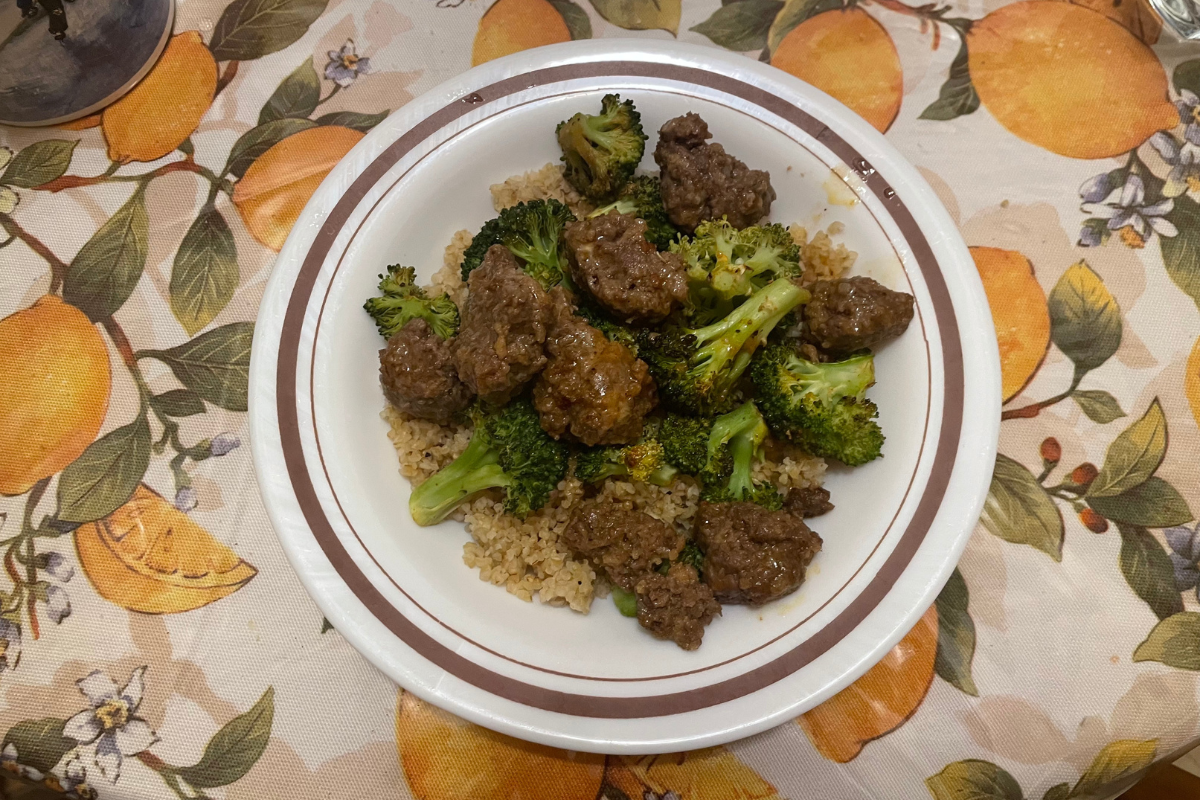Goodfood Review 2023
By Athanasia Nikolakakis | Published on 08 Aug 2023

Meal subscription services like Goodfood can be a great way to experiment in the kitchen. After all, these services allow users to select a variety of recipes each week, then send customers any necessary ingredients (and step-by-step instructions) so that they can prepare each meal.
That being said, not all meal subscription kits are made equal. To find out if Goodfood is a good deal, I ordered a single box with an introductory trial offer. Below, you can find my thoughts on the subscription box—and some of my tips on how to maximize the value of a Goodfood order.
Before we jump in, I want to make a couple of things clear. First, all of the thoughts below are my own. Additionally, Goodfood did not sponsor this post or gift me the box. I did receive a partial refund due to moldy produce (more on that below), but Goodfood’s customer service agents were not aware that I was working on a review. Also, please be aware that Hardbacon may receive a small affiliate bonus if you make a purchase through our links.
My Experience with Goodfood
I was very excited to try out Goodfood, largely because the company is based in Canada and claims to prioritize supporting local farmers. Truthfully, I expected that the shorter transportation distance would mean that the ingredients would stay fresh for a long time. Unfortunately, while I still appreciate Goodfood’s commitment to supporting Canadian farmers, I found mold on some of their cauliflower just two days after receiving my box. Goodfood was kind enough to provide a generous partial refund almost immediately, but the incident was still frustrating. Fortunately, this was the only time that I received less-than-stellar ingredients in my Goodfoox box.
I was surprised to find that Goodfood’s recipes took surprisingly long to prepare despite the fact that meal subscription kits are often marketed as a convenient option. Two of the three meals that I ordered had a frustrating prep step, while the third was difficult to cook. Nevertheless, the extra effort comes with a reward: Goodfood portions are extremely generous. Although I purchased the subscription that came with two portions per recipe, I found that I could easily stretch each recipe into three meals.
As far as the ordering process went, everything was incredibly straightforward. It was easy to select the recipes that I wanted and I was informed of my delivery date beforehand. When the date arrived, I was provided with a tracking link that showed me my driver’s location which made it easier to plan ahead and bring my food inside right away.
Ground Beef Larb Noodle Salad with Rainbow Vegetables (with Sweet Chili-Lemongrass Vinaigrette)

Goodfood’s ground beef larb noodle salad was relatively straightforward and tasty. However, it took me much longer to thinly julienne all 7 provided carrots than the recipe card implied. That being said, experience leads to wisdom: the next time that a recipe calls for julienne vegetables, I may just opt to use a grater. While the chopping was frustrating, I still learned a valuable lesson. Plus, I got to enjoy a delicious dish afterwards—and ended up with enough food for an extra meal.
Za’atar-Roasted Cauliflower Vegan Nourish Bowls (with Hummus, Walnuts & Red Kale Tabbouleh)

This meal was simple (if tedious) to assemble. Each step was easy to follow. However, it was also the meal that was affected by moldy cauliflower. Once I noticed, I had to carefully inspect each cauliflower head and salvage whatever I could.
Of course, I realized that the final meal would have less cauliflower than intended. Still, when I went to assemble the final meal, I could not help but feel as though the ratio of ingredients was wildly off. I had received an entire head of red kale, and while the hummus, walnuts, and salad dressing were evenly spread across two meals, there was so much kale tabbouleh that it became four meals. Now, I would rather receive more of a particular ingredient than less. However, I could not imagine trying to eat two extra portions worth of kale if I lived alone—especially since the tastiest and most filling parts of the meal were long gone.
Nick’s Pick | Carb-Wise: Cheddar Beef Meatballs (with Bourbon-Spiced Broccoli over Bulgur)

I had never made meatballs from scratch before, but I assumed that this recipe would be the perfect opportunity to learn. To their credit, Goodfood’s instructions were straightforward. However, the meatballs kept breaking apart in my frying pan. In the end, I even had to cut them into smaller pieces as the full-sized meatballs were not cooking through properly.
The meal was ultimately delicious, but it was also much more stressful to make than it was worth. While I still believe that meal subscription kits are a good way to learn new cooking techniques, this recipe has taught me that not all cooking techniques are ameteur-friendly.
Were the Ingredients Worth It?

Goodfood might make it easier to try out new recipes, but the subscription fee is not exactly cheap—especially since you can find plenty of free recipes online. Fortunately, when you break down the cost of each ingredient received in a box, it becomes clear that there are some situations where a subscription could save you money.
I ordered a box that contained 3 recipes and enough ingredients for 2 portions per recipe. Thanks to Goodfood’s introductory offer, I paid $29.56; without the discount, it would have cost $86.94. I received $31.55 worth of groceries in my box (which is already worth more than the introductory offer’s sticker price). However, keep in mind that if I went to a grocery store, I would have been forced to buy most ingredients in larger quantities than needed for each recipe. To buy each ingredient from scratch, I would have had to pay $161.48.
The large difference between the value of the ingredients versus the cost to purchase each ingredient on your own points towards Goodfood’s biggest strength: allowing you to experiment with new ingredients on a budget. When you select Goodfood recipes that you could have made with items that are currently in your pantry, you are left with a ridiculously high bill. However, if you want to try out a bunch of different spice blends (or new produce), Goodfood is a relatively cost-effective way to do so.
Leverage Credit Card Cashback and Rewards
A variety of grocery credit cards provide more rewards for grocery and food delivery expenditures. Using such cards for your Goodfood order can potentially fetch you additional points. However, it’s worth noting that not all credit card companies categorize Goodfood as a grocery merchant. For instance, while American Express groups Goodfood within the “supermarkets” segment, both Visa and Mastercard differentiate between traditional brick-and-mortar supermarkets and meal kit deliveries. Therefore, if you own an American Express card that grants more rewards for grocery purchases, consider using it for maximum benefits.
Strategies to Get the Most out of Goodfood
Goodfood may charge a premium for the convenience of custom-tailored grocery delivery, but they can still be a cost-effective way to experiment in the kitchen. Just keep the following strategies in mind to maximize the value of your subscription.
Choose Your Meals Strategically
As I mentioned above, one of the best ways to get good value out of a Goodfood subscription is by using the service to experiment with produce and spices that you do not have on hand. Similarly, when planning your non-Goodfood meals for the rest of the week, consider avoiding recipes with produce that your Goodfood recipes will contain.
Consider Downsizing
Goodfood’s portions are surprisingly large. I ordered the box that came with two portions per recipe but was able to turn each recipe into three meals. If you suspect that the box with four portions per recipe will be too much food for your household, consider downsizing to a box with two portions. You can always switch to a larger box if necessary, but you may find that the smaller box is enough for your needs.
That being said, I also want to emphasize how important proper nutrition is. The nutritional information that Goodfood provides on its recipe cards and website is based on the assumption that each prepared recipe will be split into a specific number of portions. When you stretch the recipe into more meals than Goodfood intended, you receive less nutrients. Above all else, please ensure that your diet meets your nutritional needs.
Prioritize Recipes with Produce
Goodfood’s packaging states that their ingredients will stay fresh in the fridge for a week. However, both the cauliflower and broccoli that I received were pre-chopped into small pieces, so I suspect that I would have had to cut away some mush by day 7. Ultimately, if you want to get the most out of your Goodfood subscription, I recommend preparing meals that use a lot of produce as early as possible. This strategy may not help you stretch the value of each dollar, but it should help to ensure that your food is as tasty as possible.
Do you still have questions about Goodfood? Check out our list of frequently asked questions for help.
